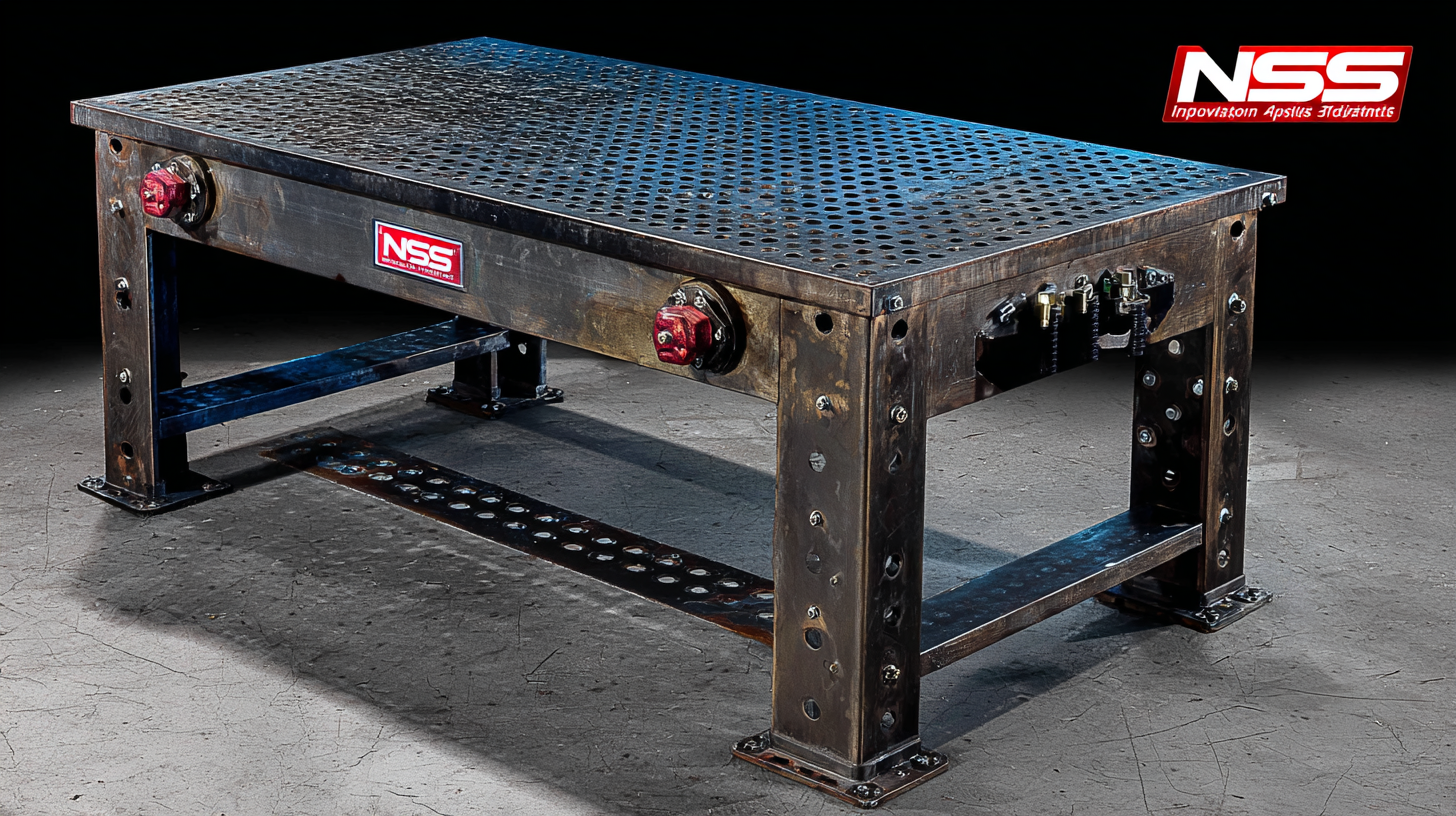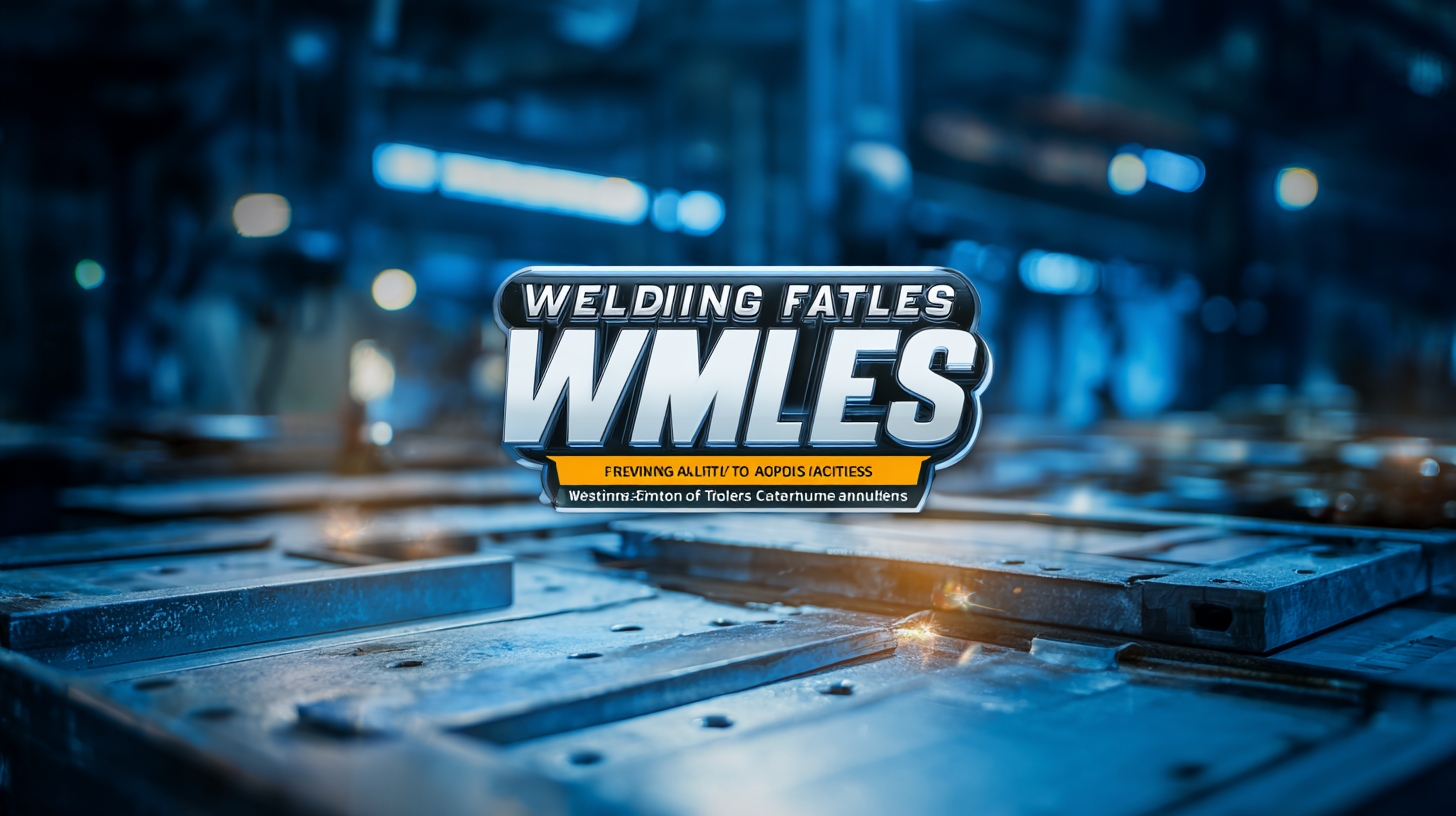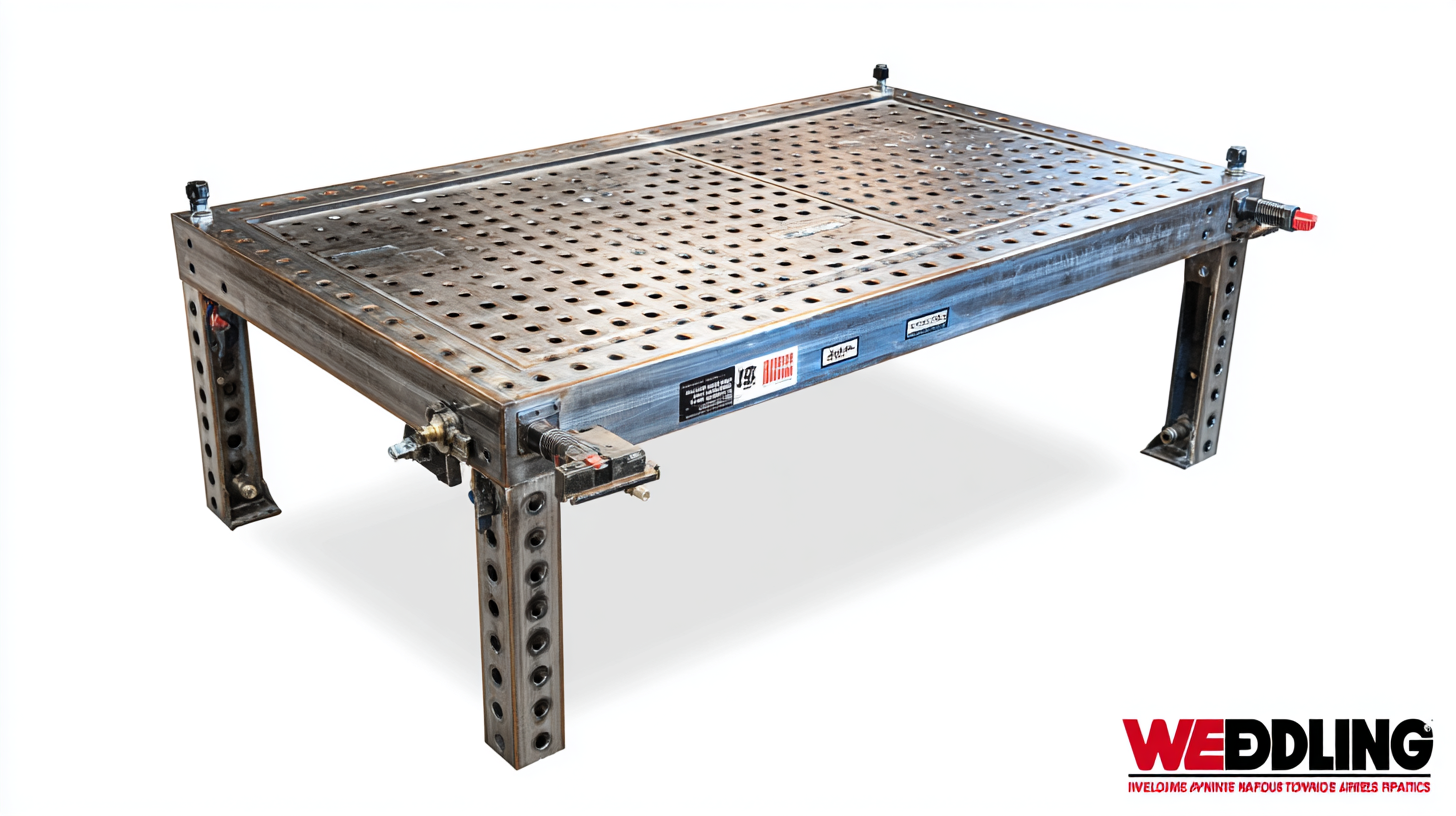

In today's rapidly evolving manufacturing landscape, the importance of precision and efficiency cannot be overstated, particularly in industries such as automotive, aerospace, and construction. Welding fixture tables, essential tools in the fabrication process, play a pivotal role in ensuring the accuracy of welds and the overall quality of the final products. According to the International Welding Federation, the global welding market is projected to reach $30 billion by 2025, with an increasing demand for sophisticated welding solutions driving innovation in fixture design and application. As we delve into the innovative applications of best welding fixture tables across various industries, we will explore how these tools not only enhance productivity and reduce costs but also contribute to the development of world-class manufacturing capabilities, especially in leading Chinese factories that continue to set benchmarks for excellence in production.

Welding fixture tables are revolutionizing the manufacturing landscape by enhancing efficiency and precision across various industries. These tables provide a stable and adjustable surface that supports complex welding projects, allowing for better alignment of components. This precision reduces the margin of error significantly, which is crucial when manufacturers are aiming for high-quality production. By standardizing the workpiece position, workers can execute repeatable welds faster and more accurately, directly contributing to improved production timelines and decreased waste.
Moreover, the versatility of welding fixture tables makes them a valuable asset in industries ranging from automotive to aerospace. By enabling quick modifications and adaptations, these tables support a variety of welding techniques and configurations. As a result, manufacturers can cater to diverse project requirements without extensive downtime. Implementing welding fixture tables not only streamlines the workflow but also enhances employee safety by minimizing the need for manual adjustments and repositioning of heavy materials, fostering a more productive workspace overall.
| Industry | Welding Fixture Table Type | Key Benefits | Efficiency Improvement (%) |
|---|---|---|---|
| Automotive | Adjustable Welding Fixture Table | Increased versatility, reduced setup time | 30% |
| Aerospace | Fixed Welding Fixture Table | Precision alignment, improved safety | 25% |
| Construction | Portable Welding Fixture Table | Enhanced mobility, adaptability to site conditions | 20% |
| Shipbuilding | Custom Welding Fixture Table | Tailored solutions, better structural integrity | 35% |
| Heavy Machinery | Multi-functional Welding Fixture Table | Increased workflow, reduction of workpiece handling | 40% |
The automotive industry is undergoing a significant transformation, driven by the integration of advanced welding fixtures that enhance production efficiency and accuracy. As highlighted in the recent Welding Accessories Global Market Report for 2025, the Asia-Pacific region is set to dominate this market due to a booming infrastructure development and increasing manufacturing demands. Advanced welding fixture tables play a crucial role in this dynamic environment, facilitating streamlined welding processes that meet the stringent quality requirements essential in automotive production.
Moreover, the projected growth of the automotive robotics market, analyzed from 2025 to 2034, underscores the importance of investing in cutting-edge welding solutions. Despite the challenges posed by high initial capital investments for robotic systems, the demand for speedy and precise manufacturing techniques remains robust. As manufacturers seek to overcome these obstacles, implementing innovative welding fixture tables can provide the necessary support to enhance productivity while minimizing costs, positioning automotive companies for success in a competitive landscape.
In the dynamic field of aerospace manufacturing, precision and efficiency are paramount. Innovative welding fixture tables have transformed component assembly processes, ensuring that complex structures are fabricated with the highest degree of accuracy. These specialized tables allow for the seamless integration of various components, facilitating quicker adjustments during assembly. With advanced features such as adjustable clamps and integrated measuring systems, these tables not only enhance productivity but also uphold the stringent quality standards required in aerospace production.
Tip: When selecting a welding fixture table for aerospace applications, look for adjustable features that can accommodate different component sizes and shapes. This versatility can significantly reduce downtime due to setup adjustments, allowing for smoother production flows.

Additionally, the use of digital technologies in welding tables is gaining traction. These smart tables can be equipped with sensors that monitor the welding process in real-time, providing instant feedback to operators. This innovation reduces the risks of defects and rework, ultimately leading to more reliable aerospace assembly.
Tip: Implementing training sessions for your team on how to utilize these advanced tables effectively can make a major impact on your overall output. Knowledgeable staff can leverage technology to maximize the efficiency of the welding process, ensuring all aerospace components are assembled accurately and on schedule.
In the construction industry, welding fixtures play a crucial role in ensuring the structural integrity of various projects. These specialized tables provide the necessary stability and precision for assembling elements such as beams, columns, and frames. By firmly holding components in place during the welding process, fixtures minimize warping and misalignment, resulting in stronger and more durable structures.

Tips for selecting the right welding fixture can greatly enhance productivity. First, consider customizing fixtures to suit specific project requirements; tailored solutions often lead to efficiency gains. Additionally, incorporating adjustable features can allow for versatility, ensuring that the fixture can accommodate different sizes and shapes of materials. Lastly, regular maintenance and inspection of welding fixtures can prolong their lifespan and maintain their effectiveness in future projects.
Integrating advanced welding fixture technology, such as magnetic or powered alignments, can further elevate the welding process in construction. Utilizing these innovations not only increases precision but also streamlines workflow, ultimately contributing to the overall safety and reliability of the built environment.
When selecting the right welding fixture table for your application, several key factors come into play that can significantly impact productivity and precision. According to a report by Grand View Research, the global welding fixture market is expected to reach USD 4.74 billion by 2025, reflecting the growing importance of advanced fixtures in enhancing manufacturing efficiency. A critical aspect of choosing a welding fixture table is the material—whether aluminum or steel. Steel tables are predominant for heavy-duty applications due to their strength, while aluminum tables offer portability and ease of customization, making them suitable for lighter tasks.
Another vital consideration is the table's adjustability and modularity. According to an industry analysis by MarketsandMarkets, customizable fixture solutions that can adapt to various workpieces are becoming essential as industries prioritize rapid prototyping and flexibility. Companies are increasingly opting for tables with T-slot designs or magnetic bases that allow for quick adjustments and optimal alignment during welding processes. By carefully assessing these factors, manufacturers can ensure they choose a fixture table that meets their specific needs, ultimately improving operational efficiency and product quality.
